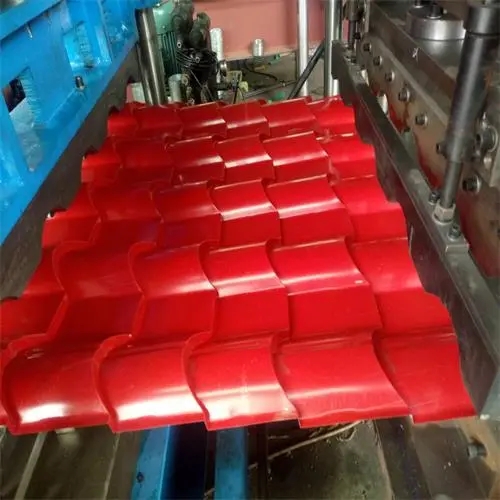
Cold Purling Roll Forming Machines An Overview
Cold purling roll forming machines have become a staple in the modern manufacturing industry, particularly in the production of steel purlins. These machines play a crucial role in the construction sector, where steel purlins are used as structural components to support roofs and walls in buildings, warehouses, and industrial structures. This article explores the operation, benefits, and applications of cold purling roll forming machines.
How Cold Purling Roll Forming Machines Work
Cold purling roll forming machines operate through a continuous process that transforms flat steel sheets into purlins. The process begins with feeding raw steel coils into the machine. The machine consists of several rollers that gradually shape the flat metal into the desired profile. Each roller is strategically positioned to bend the steel in a specific manner, allowing the steel to be transformed into various cross-sectional shapes such as C, Z, or U shapes.
One of the remarkable features of cold roll forming is that it does not require heating the metal. This is particularly advantageous as it eliminates the need for additional heating equipment, thus saving on energy costs and reducing production time. After the shaping process, the formed purlins can be cut to specific lengths as required, making them ready for immediate use in construction.
Benefits of Cold Purling Roll Forming Machines
1. Efficiency and Speed Cold purling roll forming machines are designed for high-speed production. The continuous nature of the process allows manufacturers to produce large volumes of purlins in a short amount of time, enabling companies to meet market demands swiftly.
2. Material Utilization The roll forming process is highly efficient in terms of material usage. The precision shaping minimizes waste compared to traditional manufacturing methods, allowing for cost-effective production.
3. Versatility These machines can produce a wide variety of profiles and sizes, making them suitable for different construction projects. Manufacturers can easily adjust the settings to create custom purlins, catering to specific design requirements.
4. High Strength and Durability Products made with cold roll forming maintain consistent mechanical properties, enhancing their strength and durability. This is particularly important in construction applications where structural integrity is paramount.

5. Surface Quality and Finish The finished purlins exhibit excellent surface quality, which can reduce the need for additional finishing processes. This not only saves time but also ensures that the purlins are ready for immediate application.
Applications of Cold Purling Roll Forming Machines
Cold purling roll forming machines are predominantly used in the construction and architecture industries. The primary applications include
- Roof Support Purlins provide essential support for roof structures, ensuring stability and strength. They are vital in buildings ranging from residential homes to large industrial warehouses.
- Wall Support Systems Steel purlins are also utilized in wall systems, enhancing the overall rigidity of the structure.
- Greenhouse Construction In agricultural settings, cold-formed purlins are essential for the construction of greenhouses, where robust structural support is required.
- Commercial Buildings Many commercial buildings, including shopping centers and office complexes, rely on purlins for their structural framework.
Conclusion
Cold purling roll forming machines represent an essential element in modern manufacturing, particularly for the construction industry. Their efficiency, versatility, and ability to produce high-quality products make them an invaluable asset for manufacturers looking to meet the growing demands of construction projects. As technology continues to advance, we can expect further innovations in cold roll forming processes, leading to even more efficient production methods and higher-quality products that will shape the future of construction. Investing in a cold purling roll forming machine is not just a choice for today but a strategic move towards sustainability and efficiency for tomorrow’s structures.